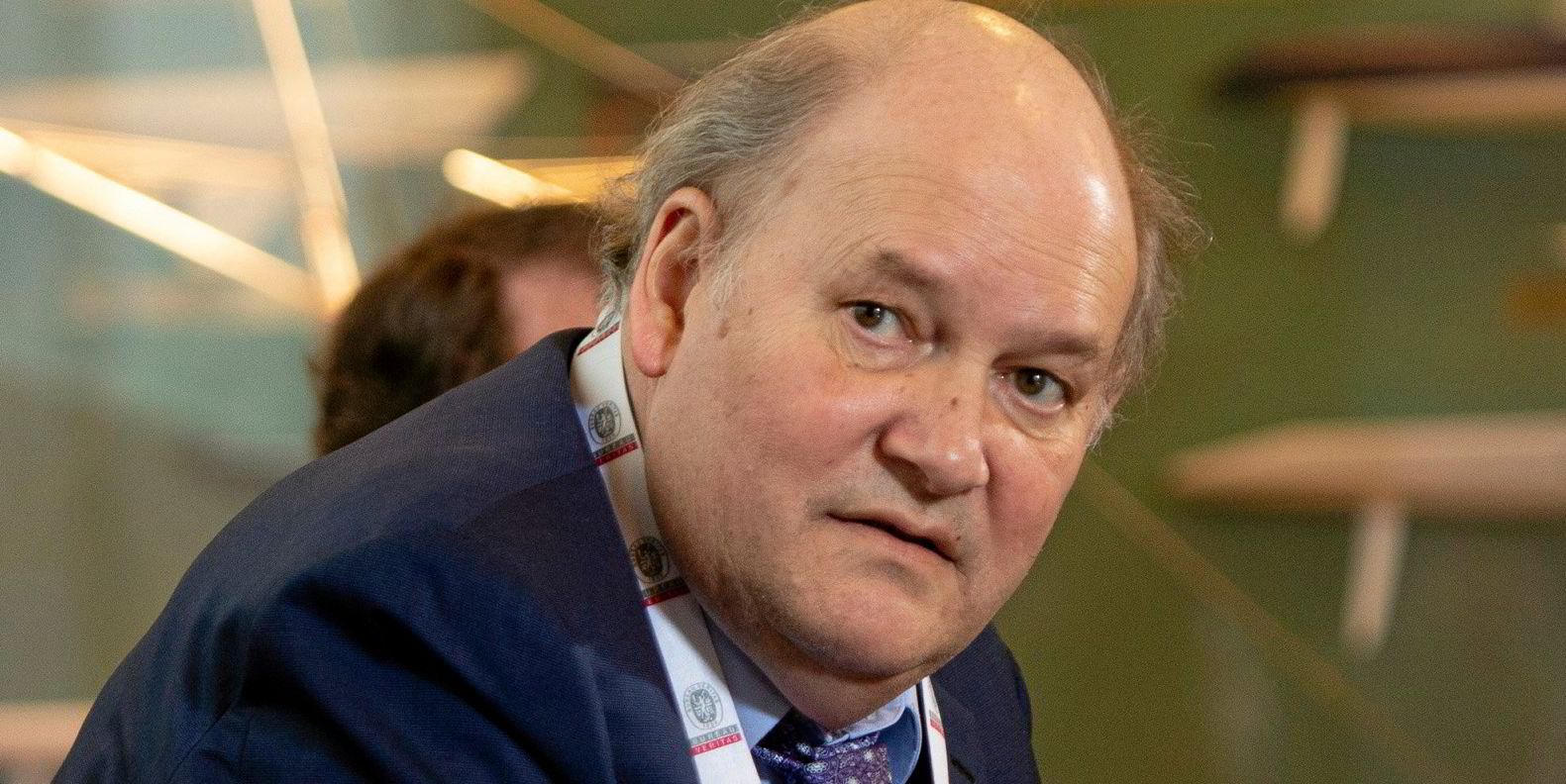Dutch lender NIBC Bank has quietly passed the €1bn mark in its shipping portfolio.
That of course does not make it the biggest ship lender, but then its clients are not the biggest of shipowners.
As global head of shipping Michael de Visser told TradeWinds, NIBC targets the smaller and medium-sized owners who largely have been abandoned by traditional shipping banks.
And while there is no pressure to grow for growth’s sake, the lender also would not mind doubling the size of its current book if the market evolves the way it projects.
About the assets
“In essence, we have not changed our style or our policy,” said de Visser, who has been with NIBC for more than 22 years.
“We’ve always been more of an asset financier than a corporate financier. You might compare our profile more to DVB Bank when it was active in shipping, and it had quite a few former NIBC people on staff then.”
While NIBC has not changed, it has benefited from the increased reluctance of traditional shipping banks to play in the market for anything but the biggest top-tier owners.
While de Visser said that trend has been in the works for many years, it has accelerated in the past five years or so.
“It boils down to the regulatory environment — banks need to keep more equity for shipping,” de Visser said.
“You know there was always an assumption that banks don’t lose so much money on shipping because we have an asset, but as we saw in some of the bad markets, the models turned out to be wrong. Because you have to keep more equity for shipping, larger banks decided to go to stronger counterparties.”
The same factors have led banks to shorten maturities from 10 to seven to five years.
The result has been “a bloodbath of price competition” in which larger banks chase elite owners at margins 200 basis points (bps) or lower above Libor.
NIBC is among the smaller lenders that have opted to serve owners in a range of 300 to 400 bps over SOFR (the replacement for Libor), while alternative capital providers are in the range of 500 bps or higher — sometimes substantially higher.
“That sort of spread has widened: we used to be within 75 bps [of the larger banks],” he said.
NIBC once took part in syndicated loans beside the larger banks, but in the past decade, it has changed its approach.
“Now it’s more bilaterals,” he said, with a sweet spot between $10m and $50m per transaction.

“Our strategy has always been to be a bank with a very granular book,” he said. “We’ve always knocked on the doors of new clients, which they like.
“We prefer a lot of clients in the portfolio,” estimating a total of around 50 holding an average exposure of $20m per client.
NIBC was, however, an initial lender to bigger public companies such as Scorpio Tankers and Ardmore Shipping, he noted.
“They grew to what they are now and were able to refinance at lower margins,” he said.
Countercyclical and conservative
Strong freight markets since Covid have somewhat stanched the outflow of lending as some — particularly regional lenders in shipping hubs such as Athens and Oslo — chase the rates, but this is the opposite of NIBC’s approach.
“Our approach has always been countercyclical, so we prefer tankers,” de Visser said. “We’ve done a lot of tankers at the end of last year and the beginning of this year.
“It doesn’t mean we don’t do dry bulk and containers, but with today’s elevated values a through-the-cycle transaction represents 30% to 40% loan-to-value as the current high levels can go down, which would result in defaults as seen by shipping banks in the past.
“Therefore, ship owners opt for financiers that are still more aggressive in their loan-to-value approach in these segments.”
NIBC provided 48 financings, refinancings and extensions in 2021 in its core geographic lending areas.
Its portfolio is 60% within Europe, 13.5% in the US, 6% in Singapore and 20.5% elsewhere.
It breaks down into 44% dry bulk, 20% crude or product tankers, 22% gas or chemical carriers and 14% in intermodal or other business.
Some recent financings have included clients such as Gram Car AS, Harren & Partner, Hammonia Schiffsholding, Norwegian Car Carriers, Conti Group and Carl Buttner.




